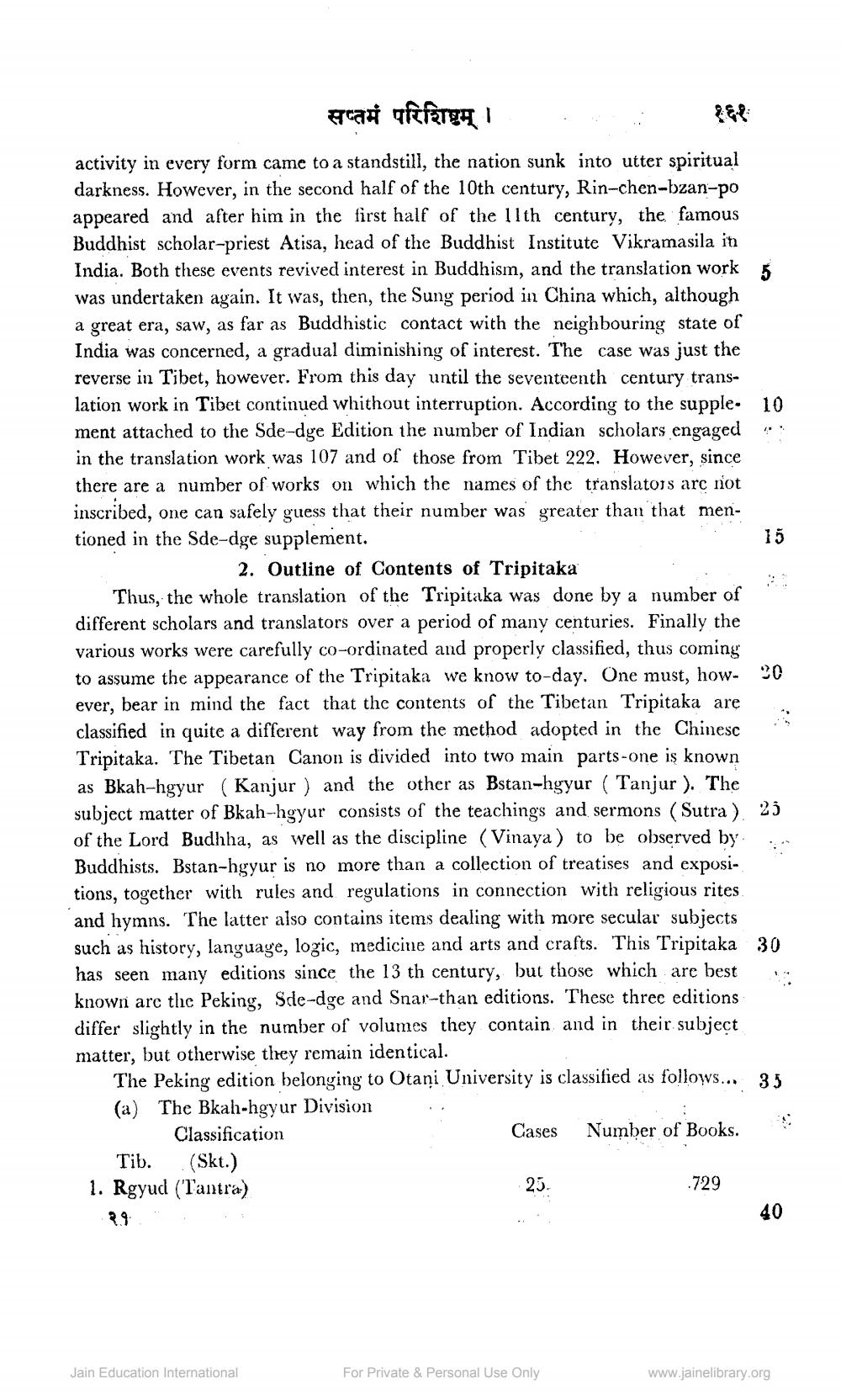________________
सप्तमं परिशिष्टम् ।
15
activity in every form came to a standstill, the nation sunk into utter spiritual darkness. However, in the second half of the 10th century, Rin-chen-bzan-po appeared and after him in the first half of the 11th century, the famous Buddhist scholar-priest Atisa, head of the Buddhist Institute Vikramasila in India. Both these events revived interest in Buddhism, and the translation work was undertaken again. It was, then, the Sung period in China which, although a great era, saw, as far as Buddhistic contact with the neighbouring state of India was concerned, a gradual diminishing of interest. The case was just the reverse in Tibet, however. From this day until the seventeenth century translation work in Tibet continued whithout interruption. According to the supple. 10 ment attached to the Sde-dge Edition the number of Indian scholars engaged in the translation work was 107 and of those from Tibet 222. However, since there are a number of works on which the names of the translators are not inscribed, one can safely guess that their number was greater than that mentioned in the Sde-dge supplement.
2. Outline of Contents of Tripitaka Thus, the whole translation of the Tripitaka was done by a number of different scholars and translators over a period of many centuries. Finally the various works were carefully co-ordinated and properly classified, thus coming to assume the appearance of the Tripitaka we know to-day. One must, how- 20 ever, bear in mind the fact that the contents of the Tibetan Tripitaka are classified in quite a different way from the method adopted in the Chinese Tripitaka. The Tibetan Canon is divided into two main parts-one is known as Bkah-hgyur (Kanjur) and the other as Bstan-hgyur (Tanjur ). The subject matter of Bkah-hgyur consists of the teachings and sermons (Sutra )25 of the Lord Budhha, as well as the discipline (Vinaya ) to be observed by Buddhists. Bstan-hgyur is no more than a collection of treatises and expositions, together with rules and regulations in connection with religious rites and hymns. The latter also contains items dealing with more secular subjects such as history, language, logic, medicine and arts and crafts. This Tripitaka 30 has seen many editions since the 13 th century, but those which are best known are the Peking, Sde-dge and Snar-than editions. These three editions differ slightly in the number of volumes they contain and in their subject matter, but otherwise they remain identical.
The Peking edition belonging to Otani University is classified as follows... 35 (a) The Bkah-hgyur Division Classification
Cases Number of Books. Tib. (Skt.) 1. Rgyud (Tantra)
25.
.729
40
Jain Education International
For Private & Personal Use Only
www.jainelibrary.org




